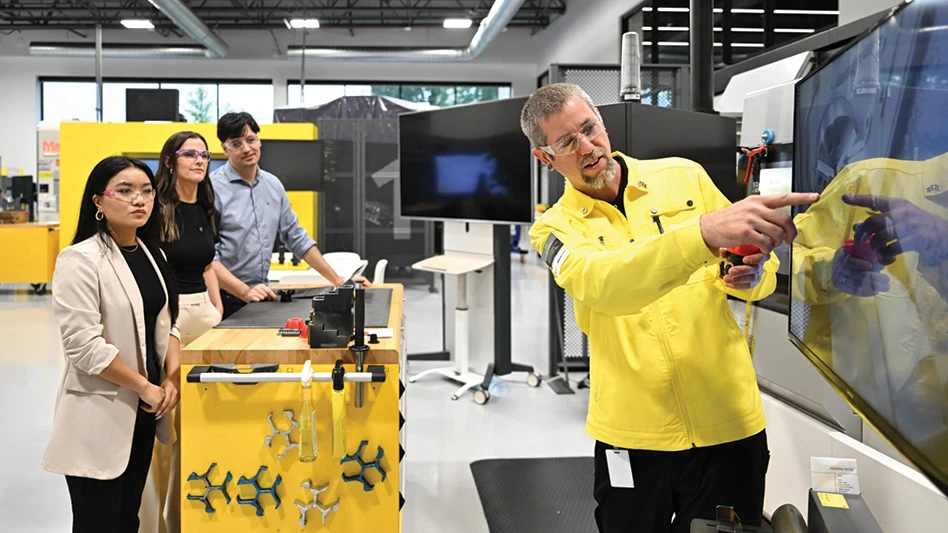
On January 2, 2008, Gibbs and Associates and Cimatron completed a merger. As you may know, Gibbs is the developer of GibbsCAM, CNC programming software, aka "CAM software," focused on production machining. Cimatron is the developer of CimatronE, an integrated CAD/CAM product for the design and manufacture of mold and die tooling. Why did they merge and why is this of interest to the CNC manufacturing market? I'll try to explain.
Gibbs began developing CAM software back in 1984 and bootstrapped itself into a "Top 20" provider of CAM software in the world. Cimatron also began developing software in the 80s and also grew into a Top 20 CAM provider. Gibbs has historically focused on the needs of production machining - companies making discrete parts - though some mold shops have found its capabilities well suited to their needs. Cimatron has historically focused on the needs of mold and die companies, though some production shops have found its capabilities well suited to their needs.
Over the years, the CAM market and CNC manufacturing have gone through many changes. Entire industries have relocated. Economies have risen and fallen. The CAM software market has matured, characterized by a large number of capable competitive products, fewer first time buyers, and increasing difficulty in growing sales volume. It is common in a mature product market for small companies to fail or consolidate into larger more competitive companies. To be successful, it is no longer adequate to be an "OK" product. Successful CAM companiesin the future will need to be superior, well-distributed and supported internationally, and cover the full breadth of functionality for its intended market. The CAM market is not simply one general purpose market. The largest segment is involved with the design and manufacture of complex molds and dies, generally called tooling. The second largest market segment can be called "production," or the making of parts.
Looking ahead with Gibbs/GibbsCAM, there were strength and weakness. Gibbs-CAM has a superior breadth of product, ranging from basic milling to advanced multitask machines like the Mazak Integrex line. Its advanced 3-axis, high-speed machining, and 5-axis simultaneous capabilities find utility on production parts and mold cavities. But GibbsCAM is not a high-end, integrated mold and die product, leaving this market to other CAD/CAM systems. Gibbs is well distributed in North America, but less so internationally. Cimatron provides a perfect complement. CimatronE focuses on mold and die. Cimatron's distribution is strongest in Europe and China. Together Gibbs and Cimatron create a "Top 10" CAM company in sales revenue; cover the major CAM markets with a complete range of best-in-class products; and combine distribution to cover the world. The resulting company is better able to compete in the maturing CAM market, providing better products and services to their customers worldwide.
Gibbs/GibbsCAM and Cimatron/CimatronE will be maintained as separate operating companies and separate products, avoiding many of the common merger problems. Customers may select the best product for their needs, without compromise. Cimatron is the parent corporation and is publicly-traded under CIMT on the NASDAQ exchange. This provides a financial strength unique to public companies. As a bigger, stronger company, Cimatron-Gibbs can provide better product, service, support, and long-term stability. All constitute a better value for the customer. The Gibbs/Cimatron merger is not the first merger in the CAM market, nor, most likely is it going to be the last. We believe, though, that the course that we are taking going forward will clearly learn from the lessons of previous mergers and set a new level of performance for the CAM market and future mergers.

Explore the May June 2008 Issue
Check out more from this issue and find your next story to read.
Latest from Aerospace Manufacturing and Design
- 2024 Favorites: #5 Article – Solving workforce issues with digital transformation
- 2024 Favorites: #5 News – GE Aerospace is investing in manufacturing
- 2024 Favorites: #6 Article – Mastering complex precision machined parts
- 2024 Favorites: #6 News – Boeing to acquire Spirit AeroSystems in $8.3B deal
- Season's greetings
- 2024 Favorites: #7 Article – Deep drawing aerospace components
- 2024 Favorites: #7 News – GKN Aerospace completes sale of St. Louis facility to Boeing
- 2024 Favorites: #8 Article – Beyond uptime





